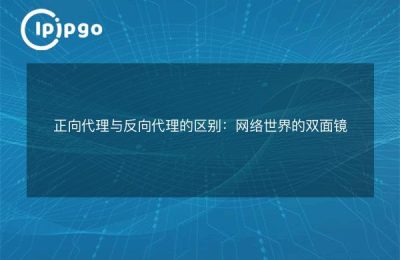
In today's digitized world, website traffic is like a constantly rushing river, and the Nginx reverse proxy is that experienced captain who directs the course of the river to ensure that every drop of water reaches its destination. Today, we'll talk about the mysteries of Nginx reverse proxy and load balancing, and how to achieve all this by proxying IPs.
Basic Concepts of Nginx Reverse Proxy
Nginx is a high-performance web server that not only handles static content, but also acts as a reverse proxy to take the pressure off of back-end servers.
1. how Nginx reverse proxy works
When users make requests, the Nginx reverse proxy receives them and forwards them to the back-end server as configured. It's like a flexible traffic cop, making sure that every car passes without incident.
2. Advantages of reverse proxies
Reverse proxies not only improve the responsiveness of websites, but also enhance security, hide information from internal servers, and protect the network from external threats.
The Art of Load Balancing
Load balancing is another important feature of the Nginx reverse proxy that evenly distributes traffic to multiple servers to avoid overloading a single server.
1. Load-balancing approach
Nginx supports a variety of load balancing algorithms such as polling, least-connected, IP hashing, and so on. Choosing the right algorithm is like assigning the right players to different instruments to ensure perfect collaboration of the orchestra.
2. Benefits of implementing load balancing
With load balancing, websites can better cope with high-traffic access, improve user experience and reduce the risk of downtime.
Optimizing Nginx Configuration with Proxy IPs
The efficiency of Nginx reverse proxy and load balancing can be further improved by choosing the right proxy IP service provider.
1. Proxy IP selection
A quality proxy IP provides faster speeds and greater stability, ensuring that Nginx operates efficiently. It's like equipping the captain of a ship with an up-to-date navigation system, which makes for a smoother voyage.
2. Proxy IP configuration
Properly configuring proxy IPs in Nginx can optimize the request forwarding process and improve overall performance.
concluding remarks
Nginx reverse proxy and load balancing is an important tool in website operation and maintenance. By properly configuring and using proxy IPs, you can achieve more efficient traffic management and a more secure network environment. I hope this article can help you better understand the subtleties of Nginx reverse proxy and load balancing, so that your website can stand out in the fierce competition on the Internet. Whether you're looking to improve performance or enhance security, Nginx is your trusted network conductor.








